Global Aphasia
Introduction
Global aphasia is a severe form of aphasia that results from extensive damage to the brain’s language-dominant hemisphere, typically the left.
Damage to the parts of your brain that regulate language can result in global aphasia.
It’s possible that a person with global aphasia can only produce and comprehend a small number of words. They frequently lack reading and writing skills.
Damage to the left side of the brain causes global aphasia, a severe form of nonfluent aphasia that impairs auditory and visual understanding as well as receptive and expressive language skills, which are necessary for both oral and writing communication. All language modalities have acquired communicative deficits that affect language production, comprehension, and repetition. Though their total production ability is restricted, patients with global aphasia may be able to speak a few brief utterances and use non-word neologisms.
Additionally impacted is their capacity to repeat words, phrases, or utterances. A person with global aphasia may still be able to communicate through gestures, intonation, and facial expressions since the right hemisphere is preserved. A significant lesion of the left perisylvian cortex is frequently the cause of this kind of aphasia. The lesion is linked to damage to Wernicke’s area, Broca’s area, and insular regions that are involved in language. It is caused by a blockage of the left middle cerebral artery.
The following are the most common causes of global aphasia:
- Stroke
- Head injury
- Brain tumor
It’s possible that people with global aphasia just experience linguistic problems. In order to communicate, they occasionally use gestures, facial expressions, and tone of voice changes.
What is transient global aphasia?
- One short-term type of global aphasia is called transient global aphasia (TIA).
- Transient global aphasia may be the cause of seizures, migraine attacks, or transient ischemic attacks (TIA).
- A ministroke is another term for a transient ischemic attack (TIA). It is a transient blood clot in your brain that doesn’t damage your brain permanently. An impending stroke can be predicted by experiencing a transient ischemic attack (TIA).
Causes of Global aphasia?
Global aphasia can be caused by injury to Wernicke’s and Broca’s regions, which are language processing centers in the left hemisphere of the brain. Language creation and comprehension depend on these two components.
The most common causes of brain injury that result in global aphasia are listed below:
- Stroke: blockage of blood supply to the brain due to a stroke. Your language processing centers may suffer irreversible harm from a lack of oxygen if the stroke occurs in your left hemisphere.
- Tumor: Global aphasia may result from a tumor in the left hemisphere of the brain. The surrounding cells are harmed when the tumor spreads. Some forms of aphasia can affect up to 30 to 50 percent of persons with brain tumors, according to reliable sources. Your brain may adjust and shift how you process language to different parts of your brain if the tumor is developing slowly.
- Infection: Although fungi and viruses can also cause an infection, bacteria are the most prevalent cause of brain infections. If an infection damages your left hemisphere, it may lead to aphasia.
- Trauma: The parts of your brain that regulate language can be harmed by a head injury. Trauma from events like accidents or sports injuries frequently leads to head damage.
A blockage to the middle cerebral artery (MCA) trunk, which impacts a significant area of the left cortex’s perisylvian region, is usually the cause of global aphasia. A thrombotic stroke, which happens when a blood clot develops in the blood arteries of the brain, is typically the cause of global aphasia.
Apart from stroke, degenerative neurological illnesses, malignancies, and traumatic brain injury (TBI) can also result in global aphasia. Since the anterior (Broca’s) and posterior (Wernicke’s) regions of the brain are distinct branches of the MCA that receive their supply from its arterial trunk, they are either eliminated or severely damaged.
Although damage to smaller, subcortical regions can cause global aphasia, lesions typically cause severe damage to the left hemisphere’s language areas. It is commonly known that aphasia can result from a cortical lesion. Lesions to the subcortical areas of the brain, including the thalamus, basal ganglia, internal capsule, and paraventricular white matter, may also result in speech and language impairments, according to a research by Kumar et al. (1996).
This is because the language centers in the brain are intimately linked to the subcortical areas. Lesions to the subcortical regions would seldom result in global aphasia, although they could produce some forms of aphasia, according to Kumar et al. These areas involve: “fronto-temporo-parietal lesions” , “anterior, suprasylvian, frontal lesions” , “large subcortical infarcts” , “posterior, suprasylvian, parietal infarcts” , along with “a double lesion composed of a frontal and a temporal infarct” .
Symptoms of Global aphasia?
One of the more severe types of aphasia is global aphasia. It may result in symptoms that impair all facets of language proficiency.
Reading, writing, speaking, and understanding speech are all extremely challenging for those with global aphasia.
Some individuals with global aphasia are able to respond to simple yes/no questions. They could be able to utter automatic expressions like “Pardon me.” Other communication methods include tone of voice changes, gestures, and facial expressions.
These are some of the ways that someone who has global aphasia could find it difficult to communicate.
Global aphasia typically develops after a thrombotic stroke (at the middle cerebral artery trunk), with different degrees of severity. The incapacity to comprehend, produce, and repeat speech and language is one of the general symptoms.These issues also continue to affect the ability to read, write, and comprehend sounds. A few familiar words and utterances (like “hello”), overlearned expressions (like “how are you”), and expletives (like “a curse word”) usually make up verbal language. Nonetheless, people with global aphasia may use gestures, intonation, and facial expressions to communicate.
It is possible to have severe lexical (vocabulary) impairment, which would make it impossible to read simple words or sentences. Global aphasia can occur with or without hemiparesis (weakness), but it may be accompanied by right-sided facial weakness and right hemiplegia (paralysis). Moreover, apraxia of speech, alexia, pure word deafness, agraphia, facial apraxia, and depression are among the other impairments that are frequently present in people with global aphasia.
People with global aphasia are typically task-oriented, socially acceptable, and attentive. While some people can answer yes/no questions, answers that touch on family and personal experiences are more trustworthy. Normal phonemic, phonological, and inflectional structures are retained in automatic speech.
Additionally, right-sided sensory loss, right hemiparesis or hemiplegia, and right homonymous hemianopsia may appear. While rejecting pseudo-words and real but erroneous names, people with global aphasia may recognize single-words for common objects and locations.
- Speaking,
- Not being able to speak,
- Having difficulty speaking and repeating what you’ve said,
- Saying things in unintelligible phrases,
- Using incorrect grammar,
- Language understanding issues,
- Difficulty comprehending others,
- Incorrectly responding to yes/no questions,
- Difficulty comprehending rapid speech,
- Taking longer than usual to comprehend spoken text,
- Writing,
- Using the wrong words,
- Utilizing poor grammar,
- Misspelling words
- Reading difficulties,
- Comprehension issues with written material,
- Difficulty pronouncing words,
- Inability to comprehend metaphorical language,
- Global aphasia presents challenges.
- Because they struggle to understand others, people with global aphasia may experience difficulties in their social lives, careers, and relationships.
- Without frequent social connection and familial support, a person may experience depression or eventually become isolated.
- People with global aphasia have fewer job options because they are unable to read or write. Treatments are available, though, and occasionally symptoms do get better. Additionally, the number of assistive gadgets that facilitate communication is growing.
Diagnosis
Your doctor will probably do a number of tests to confirm the diagnosis if they suspect global aphasia.
These examinations could include:
- Physical exam,
- Neurological exam,
- MRI.
They will probably test your language skills as well.
These examinations could include:
- Requiring you to repeat words,
- Asking yes/no questions,
- Repeating the names of common items.
Additionally, these tests can help rule out other illnesses that are comparable, such as:
- Dysphasia
- Anarthria
- Alzheimer’s disease
The symptoms of milder types of aphasia, including Wernicke’s or Broca’s aphasia, may resemble those of global aphasia but be less severe.
Following a neurological examination, physical examination, and testing, a medical professional will diagnose global aphasia. Your provider will question you or your caregiver about your medical history and symptoms throughout the examination. Since it will be challenging to talk or comprehend the questions your provider asks.
To check for brain injury, your doctor could prescribe imaging tests like a computed tomography (CT) scan or magnetic resonance imaging (MRI).
To confirm a diagnosis, you might need to consult a speech-language pathologist (SLP).
To ascertain the extent of your language processing problems, a speech-language pathologist will assess your language proficiency. Determining which therapy choices to try is another benefit of this examination.
A battery of medical imaging tests, such as an MRI (magnetic resonance imaging) or CT (computed tomography) scan, are performed on the patient if there is a suspicion of a brain injury. A speech and language pathologist will conduct a number of tests to classify aphasia following a brain damage diagnosis. Furthermore, a popular test for aphasia diagnosis is the Boston Assessment of Severe Aphasia (BASA). BASA evaluates both verbal and gestural responses and is used to establish treatment regimens when strokes cause aphasia symptoms. The Cognitive Test Battery for Global Aphasia (CoBaGa) is a tool for evaluating cognitive abilities.
Because the CoBaGa only requires manipulative replies rather than verbal ones, it is a suitable tool for evaluating individuals with severe aphasia. Cognitive abilities such attention, executive functioning, logical reasoning, memory, visual-auditory recognition, and visual-spatial ability are all evaluated by the CoBaGa.
In one study, Van Mourik et al. used the Global Aphasic Neuropsychological Battery to evaluate the cognitive capacities of individuals with global aphasia. This test evaluates visual and auditory nonverbal recognition, memory, attention/concentration, and IQ. The study’s findings assisted the researchers in concluding that people with global aphasia varied in severity.
Treatment of Global aphasia?
The degree of global aphasia determines how it is treated. Recovery is possible, but it could take longer and be more challenging than with other forms of aphasia.
People with temporary global aphasia (TIA) may get well on their own without medical intervention.
There are two types of treatment possibilities for global aphasia:
- You can immediately enhance your language proficiency with the use of impairment-based techniques.
- Improving your ability to speak in everyday contexts is one of the communication-based methods.
The main treatment for people with aphasia is usually speech and language therapy. Enhancing a person’s communication skills to a level suitable for everyday life is the aim of speech and language therapy. Collaboration among speech-language pathologists, patients, and their family members or caregivers informs the selection of goals. Goals must to be tailored to each person’s communicative requirements and aphasia symptoms.
According to Wallace et al. (2016), communication, life involvement, physical and emotional well-being, normalcy, and health and support services were the outcomes that were frequently given priority in treatment. However, there is conflicting evidence about the best effective speech and language treatment technique for treating global aphasia.
There are two types of therapy: group and individual. Visual aids can be used in group therapy to improve the development of social and communication skills. In order to promote social communication, group therapy sessions usually center on easy, prearranged games or activities.
Visual Action Therapy (VAT) is one type of therapy created especially to treat aphasia. VAT is a three-phase, thirty-step nonverbal gestural output program. Unilateral motions are taught throughout the program as symbolic representations of actual items. The efficiency of VAT has been the subject of scant and conflicting research.
Teaching family members and caregivers how to communicate with their loved ones more effectively is a crucial therapeutic approach. According to research, these tactics include making sentences simpler and using more common vocabulary, getting someone’s attention before speaking, using visual clues and pointing, giving them enough time to react, and providing a distraction-free, calm space.
There is little evidence to support the effectiveness of pharmaceutical therapies for aphasia. The advantages of pharmacological treatment have not yet been demonstrated by extensive clinical trials.
Speech therapy
Speech therapy is the most common form of treatment for global aphasia.
Speech therapists employ a variety of methods to help you become more proficient in language.
Therapists may use computer tools to support the rehabilitation process in addition to speech exercises.
Speech therapy aims to achieve the following:
- Recovering speech,
- Communicating as effectively as possible,
- looking for alternate forms of communication,
- Keeping those who have global aphasia and their caretakers informed about the disease.
Visual action therapy
When spoken treatments are currently too sophisticated, visual action therapy may be employed. It is completely devoid of words. People who receive visual action therapy learn how to communicate with gestures.
You can participate in this kind of nonverbal therapy without using words. You will learn how to depict items using gestures, which are bodily actions, from your provider. Your gestures facilitate communication. To indicate that you would want something to drink, for instance, you could put your hand to your mouth and wrap your fingers around a fictitious glass.
Noninvasive brain stimulation
Non-invasive stimulation of the brainA very recent addition to aphasia treatment.
with addition to speech-language therapy, it employs methods like transcranial magnetic stimulation (TMS) and transcranial direct current stimulation (tDCS) to aid with language recovery.
Music therapy (melodic intonation therapy):
Your brain’s language processing regions will be stimulated by a provider using melodies and rhythms. Your ability to communicate and comprehend language may both benefit from this.
Global aphasia recovery
Global aphasia recovery is a gradual process.
Regaining complete language skills is uncommon, but with the right care, many patients experience notable improvements.
The good news is that after aphasia initially appears, its symptoms may worsen for years.The degree of brain damage and the individual’s age determine how quickly global aphasia recovers.
Compared to other language skills, people typically regain language comprehension abilities more quickly.
Augmentative and alternative communication:
There are many different ways to communicate without speaking. You will learn how to communicate your requirements and desires from a healthcare professional. For instance, to indicate that you want to go outside, you may use a board with photos on it and point to the picture of a tree.
Physical Therapy Treatment:
Physical therapists learn how to treat individuals with neurological disorders that frequently result in aphasia. In order to maximize patient engagement and facilitate appropriate referrals, if or when funded by the a physical therapist, it is crucial to be informed about the condition and its types.
Clinical trials, or tests on humans, are also being conducted to find out how well novel treatment approaches work for global aphasia. During clinical trials, you might be eligible to explore drugs or forms of brain stimulation, such as transcranial magnetic stimulation.
Prevention:
Although it is impossible to stop every cause of global aphasia, you can lower your risk by:
- Addressing any underlying health issues.
- Taking safety measures when engaging in activities that carry a high risk.
- Minimizing brain damage by calling emergency services as soon as a stroke is suspected.
Prognosis:
Age, lesion location, pre-existing cognitive level, motivation, general health, and interactions among these are the primary contributing participant elements that affect the degree of neuroplasticity, or the brain’s capacity to change, when assessing a patient’s prognosis. Due to brain swelling (cerebral edema), the earliest symptoms of global aphasia may manifest during the first two days following brain trauma. Impairment presentation may develop into either receptive aphasia or expressive aphasia (more frequently) with time and natural recovery.
The prognosis for language abilities is poor because of the location and extent of the lesion linked to global aphasia. According to research, the degree of aphasia that develops in the first four weeks following a stroke determines the prognosis for long-term language ability. Because of their low initial language skills, people who are diagnosed with aphasia after a month have a dismal prognosis.
However, the Western Aphasia Battery (WAB) scores of patients with global aphasia improved from baseline in the first year following a stroke. Individuals with Broca’s aphasia demonstrated the greatest rate and degree of improvement when compared to those with Wernicke’s, anomic, conduction, and Broca’s aphasia. Global aphasia came in second. The first four weeks following a stroke had the greatest rate of improvement in verbal function.
Even though people with global aphasia have a bad prognosis, they can nevertheless improve in a number of language-related areas. Ferro, for instance, conducted study in 1992 on the rehabilitation of people who had acute global aphasia, which was caused by five distinct lesion locations. Out of all the study participants, individuals with injuries in the fronto-tempo-parietal region of the brain experienced the least degree of improvement, and they frequently never recovered from global aphasia.
The brain’s anterior, suprasylvian frontal region was the second lesion site; subcortical infarcts were the third; and posterior, suprasylvian parietal infarcts were the fourth. Lesions two, three, and four participants frequently recovered to a less severe type of aphasia, like transcortical or Broca’s. Patients who had lesions at the fifth lesion site, which was a twofold lesion in both the frontal and temporal infarcts, exhibited a little improvement. Though full recovery is uncommon, research indicates that spontaneous improvement, if it occurs, comes within six months.
Speech and language treatment has been found to help people with global aphasia improve their verbal and nonverbal speech and language abilities. One study looked at the recovery of a group of people who had been diagnosed with global aphasia three months after their stroke. The patients got rigorous language and speech therapy. The study’s findings demonstrated that every patient had improved. The use of propositional discourse showed the least gain, while aural comprehension showed the most. The individuals’ communication skills remained substantially affected six months after the stroke, and they demonstrated an increasing usage of gestures.
Although the majority of development is made during the first three years of therapy, long-term intense language intervention can cause language skills to steadily improve over time. Even though intervention can enhance language skills, only 20% of people with global aphasia are able to utilize language in a functioning way. Examples of common functional language use for this population include the ability to communicate basic needs and understand simple conversations on highly familiar topics.
Conclusion:
As you read this, you can’t even begin to picture what it would be like to have global aphasia. Following an event like a stroke, you suddenly lose the ability to do things like read the headline of a newspaper or sing the lyrics to your favorite song. Not being able to understand or feel understood can be a lonely experience. However, you don’t have to deal with it alone. Your loved ones and healthcare professionals will collaborate closely to create a customized treatment plan. They will assist you in discovering new forms of self-expression that facilitate and improve communication.
Significant harm to the brain’s language-processing regions causes global aphasia, a dangerous disorder. Speaking, reading, writing, and understanding language are all challenging for those who suffer from global aphasia. Although strokes are the most frequent cause of global aphasia, other conditions such brain injury, brain tumors, and infections can also cause it.
Global aphasia can be treated in a number of ways. Of them, speech and language therapy is usually recommended by clinicians. Numerous more recent therapy modalities are still being investigated. To find out which therapy option is best for them, people with global aphasia should speak with their doctors.
FAQs
Which artery is impacted when someone gets global aphasia?
A blockage to the middle cerebral artery (MCA) trunk, which impacts a significant area of the left cortex’s perisylvian region, is usually the cause of global aphasia. A thrombotic stroke, which happens when a blood clot develops in the blood arteries of the brain, is typically the cause of global aphasia.
Does global aphasia get better?
In the initial weeks or months following a stroke, global aphasia may improve quickly, depending on the degree of impairment to the language regions of the brain. Over time, a global aphasia diagnosis may evolve into another type of aphasia.
Why does global aphasia occur?
Global aphasia is caused by severe injury to the various language processing regions of your brain, particularly Wernicke’s and Broca’s areas. These brain regions aid in word and phrase formation, vocabulary access, and language comprehension.
Where is the global aphasia lesion located?
Because the language and motor control regions of the cortex are close together, global aphasia follows significant perisylvian lesions in the left middle cerebral artery (MCA) zone and is accompanied by hemiparesis on the contralateral side.
Can a person with global aphasia recover?
After the brain has had time to heal, temporary global aphasia will go away. However, substantial treatment may be necessary to restore the capacity to generate and understand language if global aphasia was caused by a major stroke or other brain injury.
What differentiates global aphasia from Broca’s aphasia?
Compared to Broca’s aphasia, global aphasia is a more severe type of aphasia. Whereas the frontal lobe is affected by Broca’s aphasia, a significant portion of the brain is affected by global aphasia.
What is the duration of global aphasia?
The findings demonstrated that recovery from global aphasia following a stroke can last for more than ten years, not only the first few years after onset.
What causes global aphasia?
Damage to several language centers in the brain, including Wernicke’s and Broca’s areas, causes global aphasia. Global aphasia is likely to occur shortly after a brain injury or stroke. With advancements, global aphasia may be categorized as a different kind of aphasia.
Which is the most prevalent aphasia?
The most common kind of fluent aphasia, Wernicke’s aphasia, can be caused by damage to the brain’s temporal lobe. Individuals who suffer from Wernicke’s aphasia may use extended, meaningless sentences, omitting words, or even inventing new ones.
Are those who have global aphasia able to read?
The most severe type of aphasia, known as global aphasia, affects people who can understand little to no spoken language and produce few identifiable words. People who have global aphasia are unable to read, write, or study.
Is it possible to reverse global aphasia?
Some aphasics recover fully on their own without therapy. However, aphasia usually persists to some degree in the majority of people. Over time, therapies like speech therapy can help people regain some of their speech and language abilities, but many people still struggle to communicate.
How is the diagnosis of global aphasia made?
To establish the existence of aphasia and choose the best language treatment plan, a speech-language pathologist (SLP) can do a thorough language examination. The evaluation helps determine if the individual is able to: Name common objects. Take part in a discussion.
What kind of stroke results in worldwide aphasia?
Particularly during the immediate phase of a massive, left middle cerebral artery stroke, global aphasia is typical. This aphasia can occasionally be detected in patients who have had two or fewer strokes in the left hemisphere.
What signs of global aphasia are present?
difficulty using whole sentences when speaking,
difficulty repeating words,
using basic language.
making errors in grammar.
use the wrong terms or expressions.
difficulty comprehending other people.
Understanding rapid-fire communication can be challenging.
What distinguishes global aphasia from aphasia?
One of the most severe forms of aphasia is global aphasia. It is caused by damage to several parts of the brain involved in language processing. Only one identifiable word can be produced by patients with global aphasia. They are able to comprehend very little or no spoken language.
What is an example of global aphasia?
Individuals who have global aphasia may talk in “stereotypes” or just a few words, like “no,” “hey,” or “what.” Words or phrases that are used often with varying intonations are known as stereotypes. Examples include “something wonderful,” “I love you,” and “ding da ding.”
References
- Serasiya, A. (2023, February 1). Global Aphasia – Cause, symptoms, diagnosis, treatment. Samarpan Physiotherapy Clinic. https://samarpanphysioclinic.com/global-aphasia/
- Global Aphasia. (2024, October 29). Cleveland Clinic. https://my.clevelandclinic.org/health/diseases/global-aphasia
- Wikipedia contributors. (2024, March 17). Global aphasia. Wikipedia. https://en.wikipedia.org/wiki/Global_aphasia
- Yetman, D. (2020, January 29). What you need to know about global aphasia. Healthline. https://www.healthline.com/health/neurological-health/global-aphasia
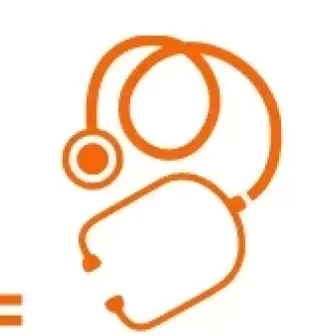
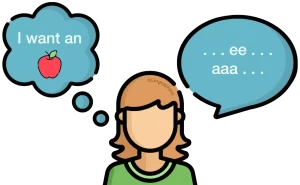

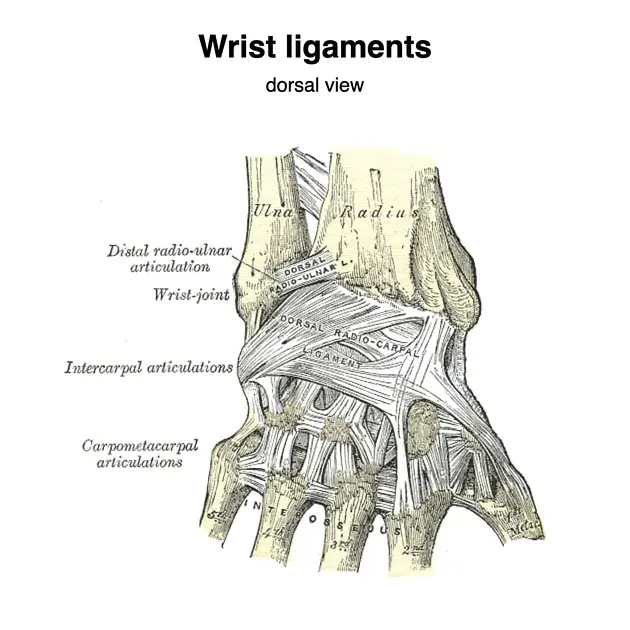
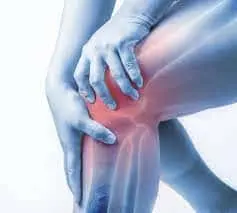
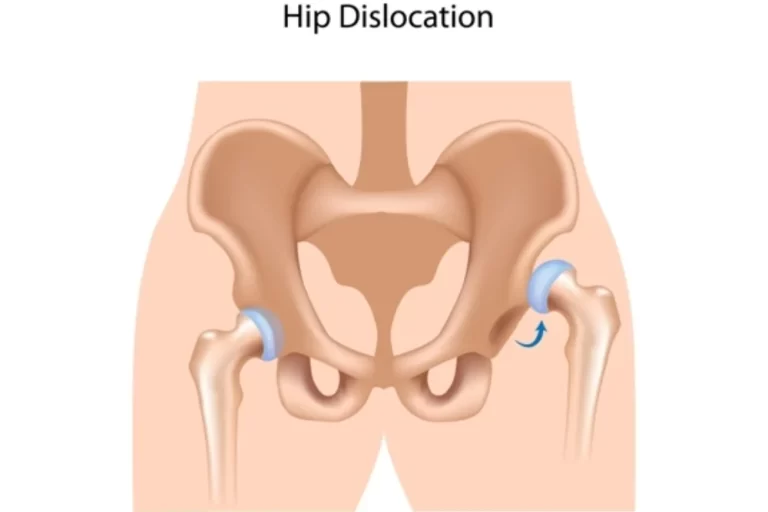
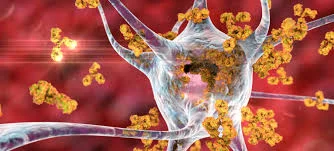
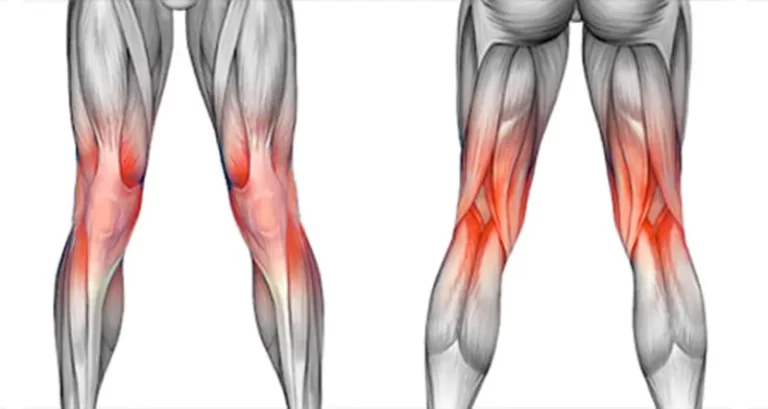
One Comment